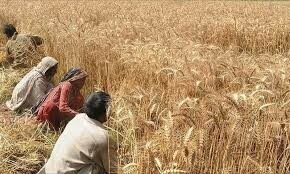THE Food and Agriculture Organisation (FAO) of the United Nations has asked the Punjab government to provide support to farmers to purchase machines that can harvest with low residue.
It has also urged the adoption of relevant climate smart practices to help increase yields and the usage or sale of residue as fertiliser, animal feed supply, bio-gas production, instead of being burnt.
The contribution of the agriculture sector, particularly crop residue burning, is significant to the seasonal smog phenomenon in Punjab. It is the third largest sector by emissions following transport and industrial sector.
Up to 88pc of farmers say they would agree to accept a law banning the burning of crop residues provided that alternative methods are made available
There is an urgent need for crop residue-based renewable energy planning since a number of such initiatives are being undertaken in neighbouring countries for bio-energy generation, emphasises the FAO report: “Remote Sensing for Spatio-temporal mapping of Smog in Punjab and Intensification of the Underlying Causes Using GIS Techniques (R-SMOG),” submitted to the Punjab government this week.
The report provides an insight into the importance of the design and implementation of appropriate climate change adaptation and mitigation strategies and actions. In particular, these should be an integral part of any plan for the revitalisation of the agriculture sector,” said FAO Representative in Pakistan, Mina Dowlatchahi.
Rice residue burning accounts for 20 per cent of total air polluted emissions with respect to other sectors. Though the emission contribution is minimal as compared to other sectors, it may support significantly the seasonal smog phenomenon in Punjab, according to the report.
The emissions from residue burning of other crops have not been estimated due to the fact that since smog usually happens in October and November and these two months only involve burning of rice residue.
A comparison of total fire events from 2008-2018 shows that the number of fire events is significantly higher in the months of October and November which complements the fact that more crop residues burning activities are carried out in these months to prepare land for next crop.
Assessment and mapping of aerosol point sources indicate that 65 per cent of aerosol sources were detected within Pakistan which means most of the sources are located within Pakistan and sources of smog need to be managed and controlled within the country first,
Biomass burning and mixed-type pollutants were found mostly originating from within Pakistan in the smog dominated zone, however, sources were also detected in neighbouring regions such as India, Afghanistan and Iran with Indian contributions mainly constituting to fine mode biomass/urban type pollutants.
In carrying out the study the focus group, in collaboration with agriculture specialist from the Punjab Agriculture Department, held discussions with farmers which helped understand the reasons, and get insights about the trends in residue burning practices. Overall, farmers reported that burning of crop residues for the past sixteen years, ranging from five to thirty years.
An important factor is that in the past farmers used crop residue as fodder for their animals before burning started. This is no longer widely practiced.
Up to 88pc of the farmers say they would agree to accept a law banning burning of crop residues provided that alternative methods are made available. These farmers also demanded the government to provide subsidy or better technology for incorporation of crop residue.
The remote sensing analysis of fire events indicates more fire events occurring in Indian-administered Punjab, therefore it is evident that smog is a trans-boundary issue and requires regional cooperation.
The report emphasised the need for inter-country collaboration on data and information sharing as well as collaborative strategies. Cumulative measures and joint efforts can help eradicate a problem that respects no boundaries, report says.
The establishment of an early warning system for potentially severe smog incidents and smog monitoring network was recommended.
Published in Dawn, The Business and Finance Weekly, February 4th, 2019















































